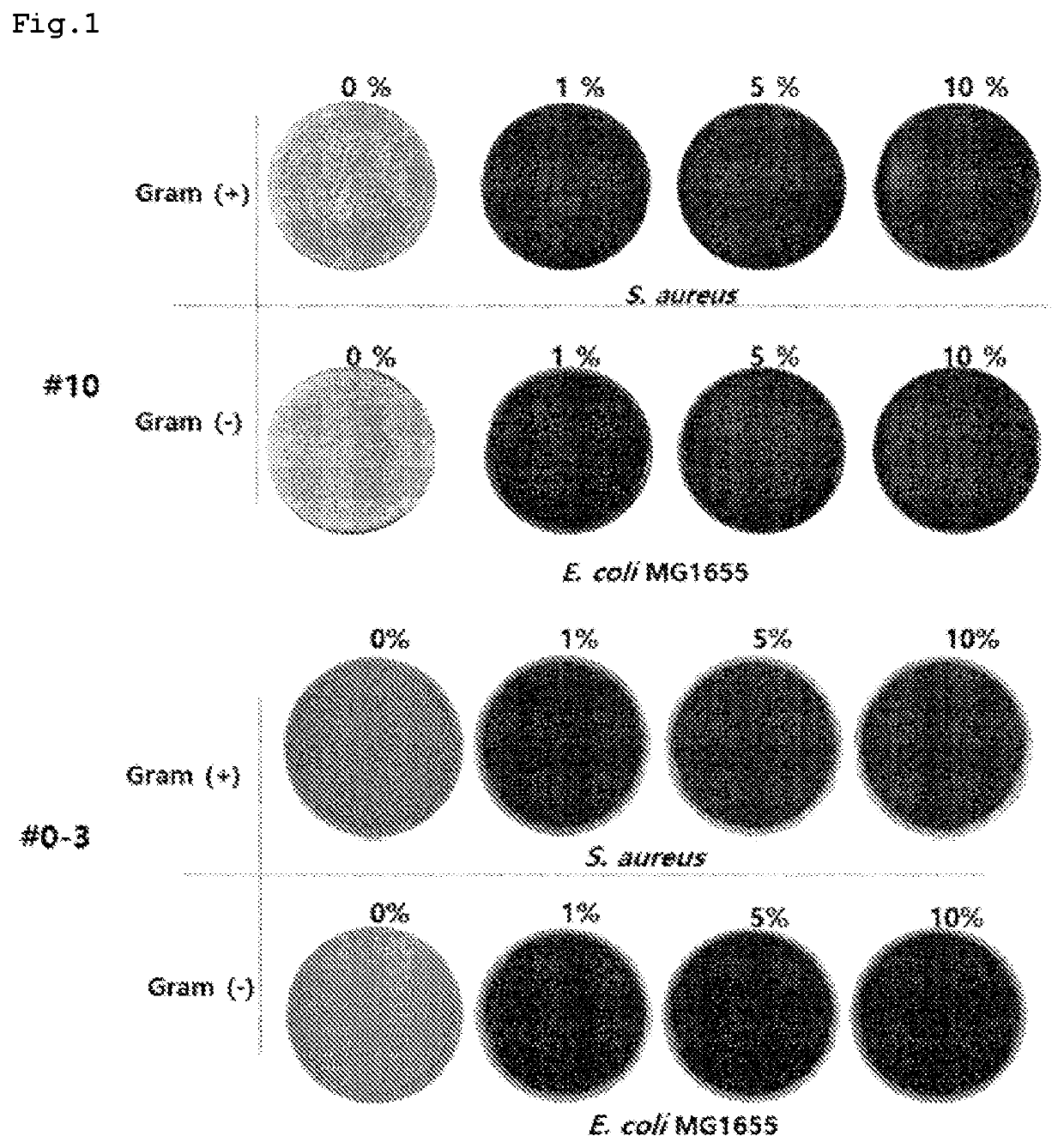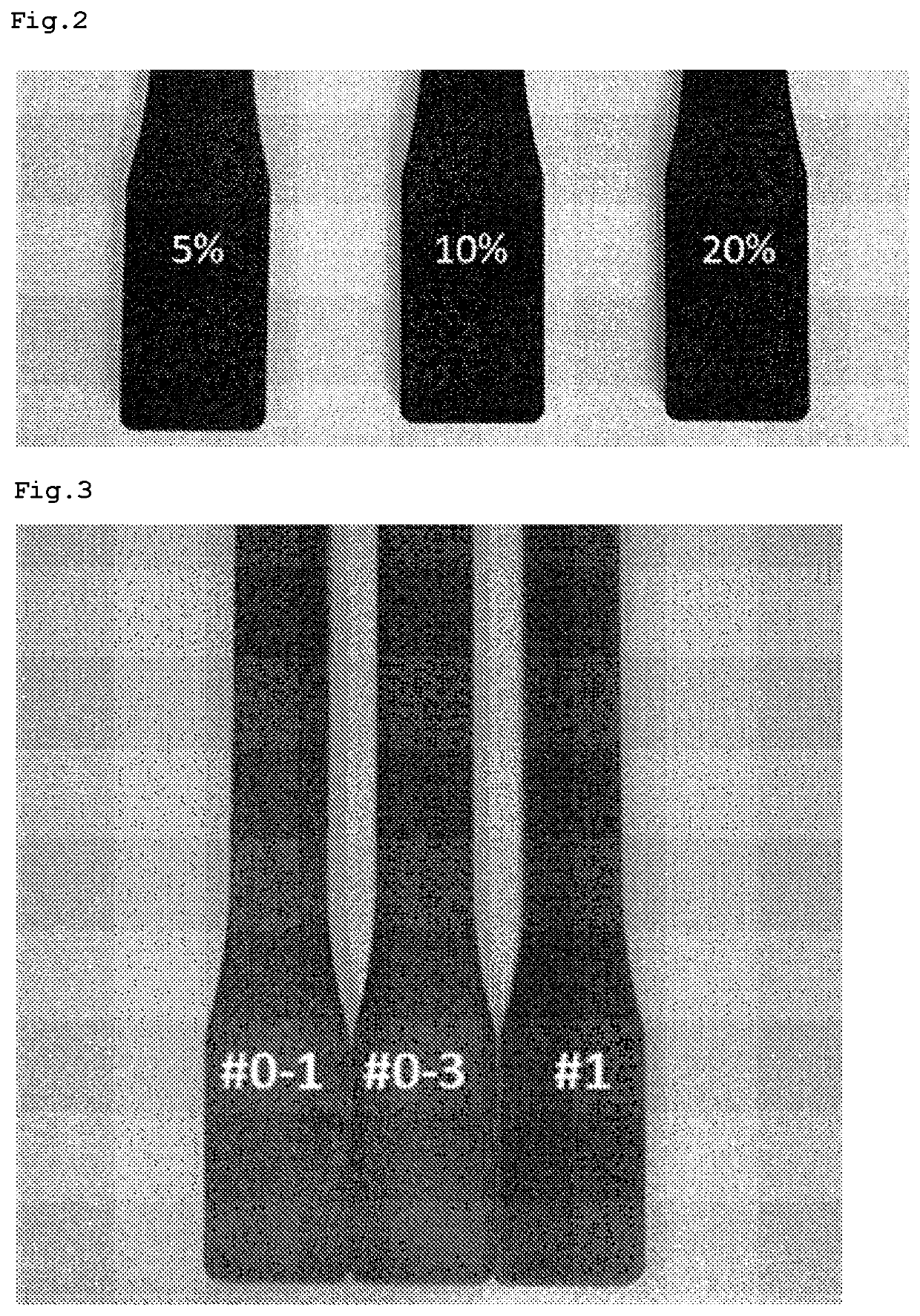Method for preparation of antibacterial bio-filler for plastic and antibacterial bio-filler for plastic prepared thereby
a biofiller and plastic technology, applied in the field of plastic biofillers and plastic biofillers prepared thereby, can solve the problems of increasing production costs, unsuitable relevant technologies, large amount of carbon dioxide and pollutants, etc., and achieves high oleophilic effect, excellent thermal properties, and economical production costs.
- Summary
- Abstract
- Description
- Claims
- Application Information
AI Technical Summary
Benefits of technology
Problems solved by technology
Method used
Image
Examples
experimental example 1
Modification Reaction of Lignocellulosic Biomass
[0083]Lignocellulosic biomass to be modified was obtained from pine trees grown in Korea. The biomass was pulverized into pieces less than 1 mm in diameter before hot water treatment. With respect to the hot water treatment, reference was made to the document (Bioresource Technology, 2016, vol. 216. pp:862-869, Liquid hot water pretreatment of multi feedstocks and enzymatic hydrolysis of solids obtained thereof).
[0084]First, pine tree powder was fed as the biomass at a mass ratio of 1:10 with water to a stainless-steel reactor, followed by reaction at 190° C. for 60 minutes. After completion of the reaction, the reactor was cooled to less than 100° C. and the solid substance was recovered through filtration, washed twice with water, and dried at 70° C. in a drier to afford a lignocellulose solid deprived of hemicellulose.
[0085]The lignocellulose solid obtained was treated with 75% (v / v) sulfuric acid at a reaction temperature of 120° C...
experimental example 2
Antibacterial Activity of Biomaterial
[0088]The bio-filler prepared under #10 condition of Experimental Example 1 was pulverized into particles with a size of 0.1-50 μm and assayed for antibacterial activity according to contents thereof. First, M9 agars were prepared to contain 1 wt %, 5 wt %, and 10 wt % of the biomaterial, respectively.
[0089]As for M9 salts, 64 g of Na2HPO4-7H2O, 15 g of KH2PO4, 2.5g of NaCl, and 5.0 g of NH4Cl were contained per liter of DW. Each M9 agar was prepared with 800 ml of the M9 salt solution, 2 ml of 1 M MgSO4, 20 ml of 20 wt % glucose, 100 μl of 1 M CaCl2, and 15 g of agar.
[0090]After seed growth to about OD600=1, Gram-negative E. coli and Gram-positive S. aureus were each 10−6 fold diluted and spread over the M9 agar plates prepared above for assaying antibacterial activity. The results are depicted in FIG. 1.
[0091]FIG. 1 shows M9 agar plates containing 1% of the biomaterial on which E. coli and S. aureus were spread and grown for 12 hours. As can be...
experimental example 3
Dispersibility in Plastic and Surface Characteristic of Biomaterial
[0092]The samples prepared by hydrophobization under the conditions #0-1, #0-3, and #1 in Experimental Example 1 were assayed for dispersibility in plastics and surface characteristic.
[0093]In brief, PP (J-370, Lotte Chemical) composite resins respectively containing 5 wt %, 10 wt %, and 20 wt % of the biomaterial of sample #1 condition were prepared and maintained to retain a moisture content of less than 0.1 wt % before specimen preparation. ASTM standard specimens were prepared from the dry composite resins and are depicted in FIG. 2. As can be seen in FIG. 2, the biomaterials were observed to be well dispersed in the plastic specimens.
[0094]Samples #0-1, #0-3, and #10 were pulverized to prepare biomaterials as particles with a size of 0.1-50 μm. PP (J-370, Lotte chemical) composite resin containing 10 wt % of each of the above prepared biomaterials was injected at 250° C. into ASTM standard specimens shown in FIG...
PUM
| Property | Measurement | Unit |
|---|---|---|
| size | aaaaa | aaaaa |
| size | aaaaa | aaaaa |
| temperature | aaaaa | aaaaa |
Abstract
Description
Claims
Application Information
 Login to View More
Login to View More - R&D
- Intellectual Property
- Life Sciences
- Materials
- Tech Scout
- Unparalleled Data Quality
- Higher Quality Content
- 60% Fewer Hallucinations
Browse by: Latest US Patents, China's latest patents, Technical Efficacy Thesaurus, Application Domain, Technology Topic, Popular Technical Reports.
© 2025 PatSnap. All rights reserved.Legal|Privacy policy|Modern Slavery Act Transparency Statement|Sitemap|About US| Contact US: help@patsnap.com


